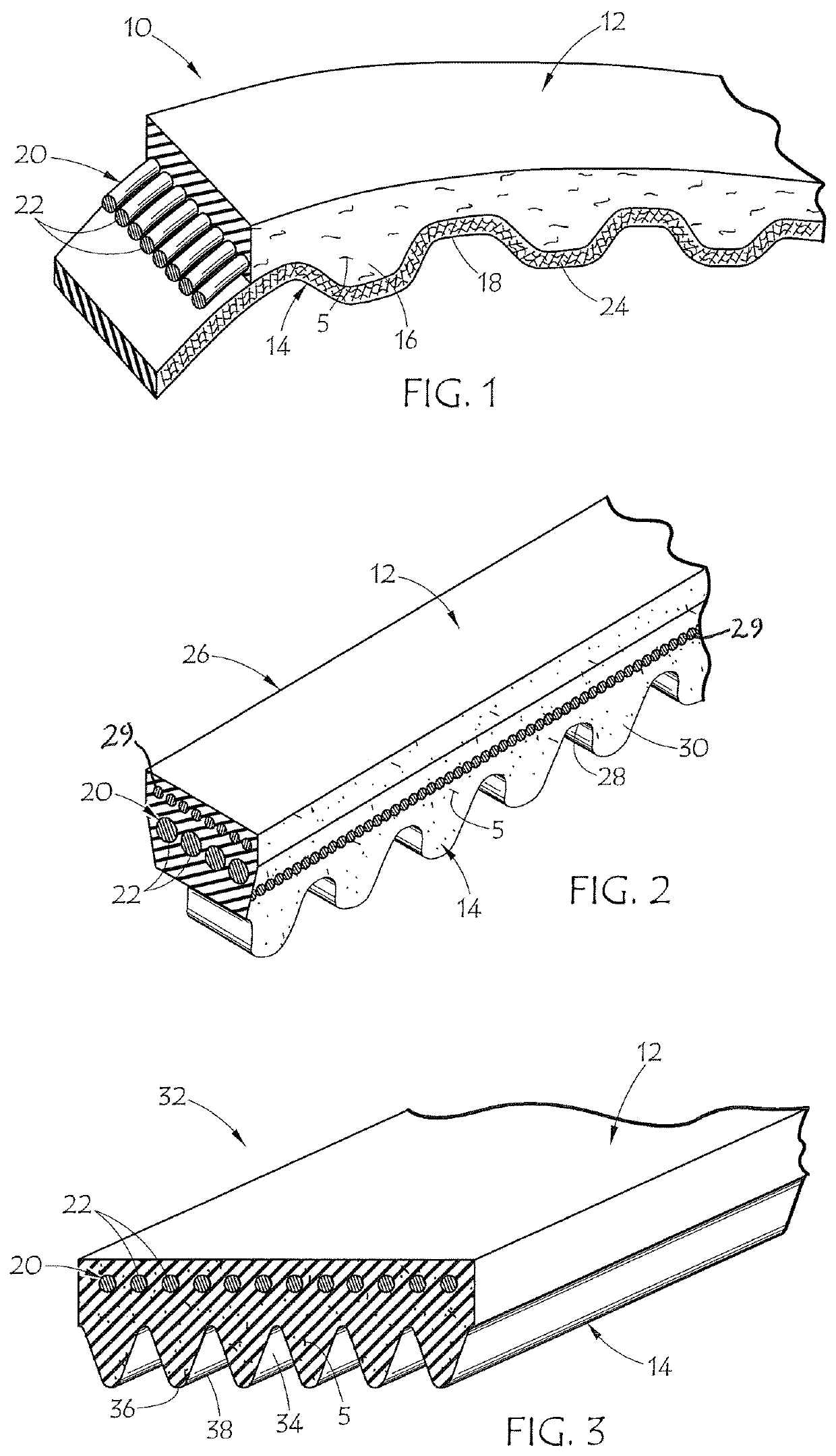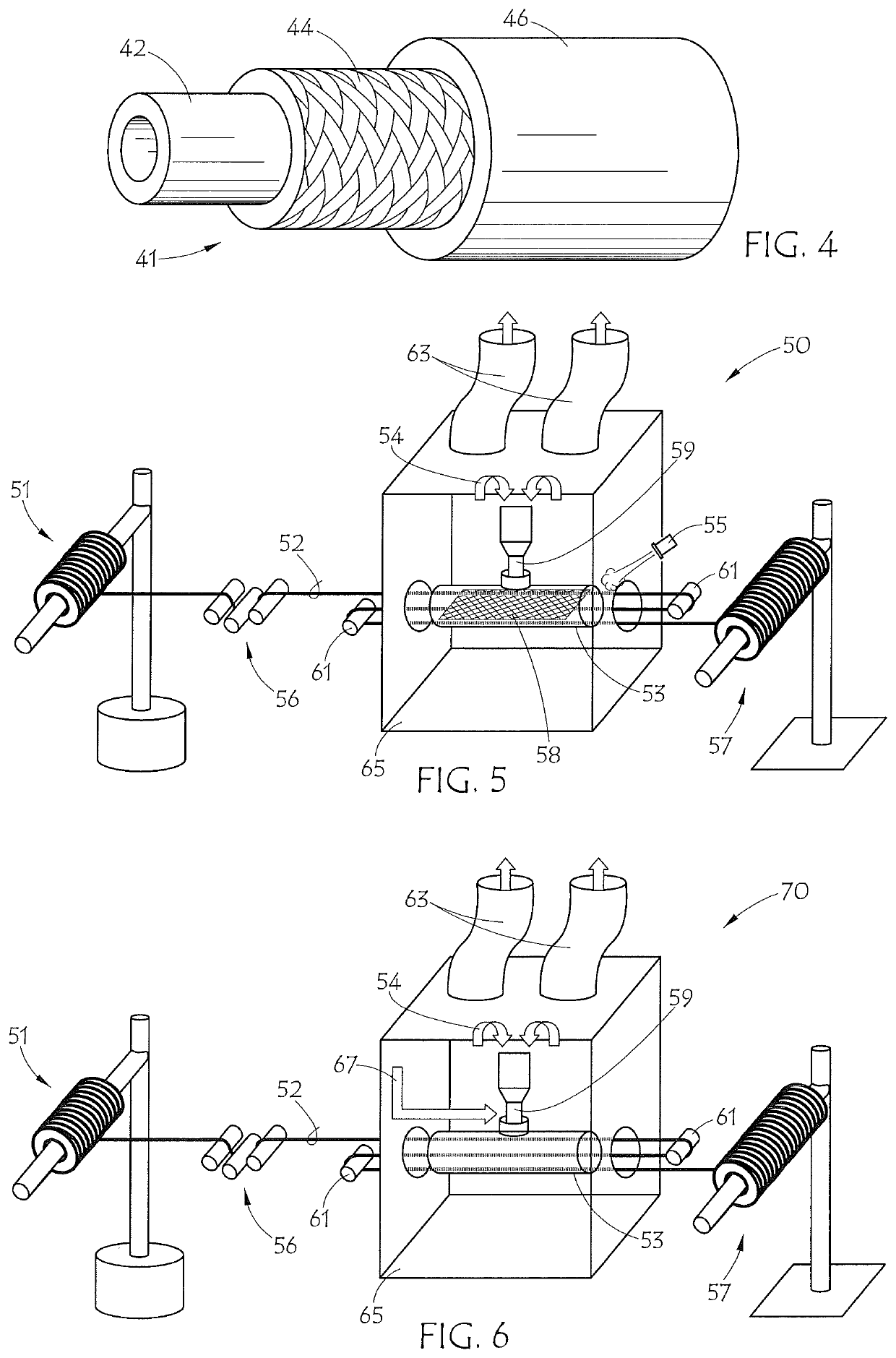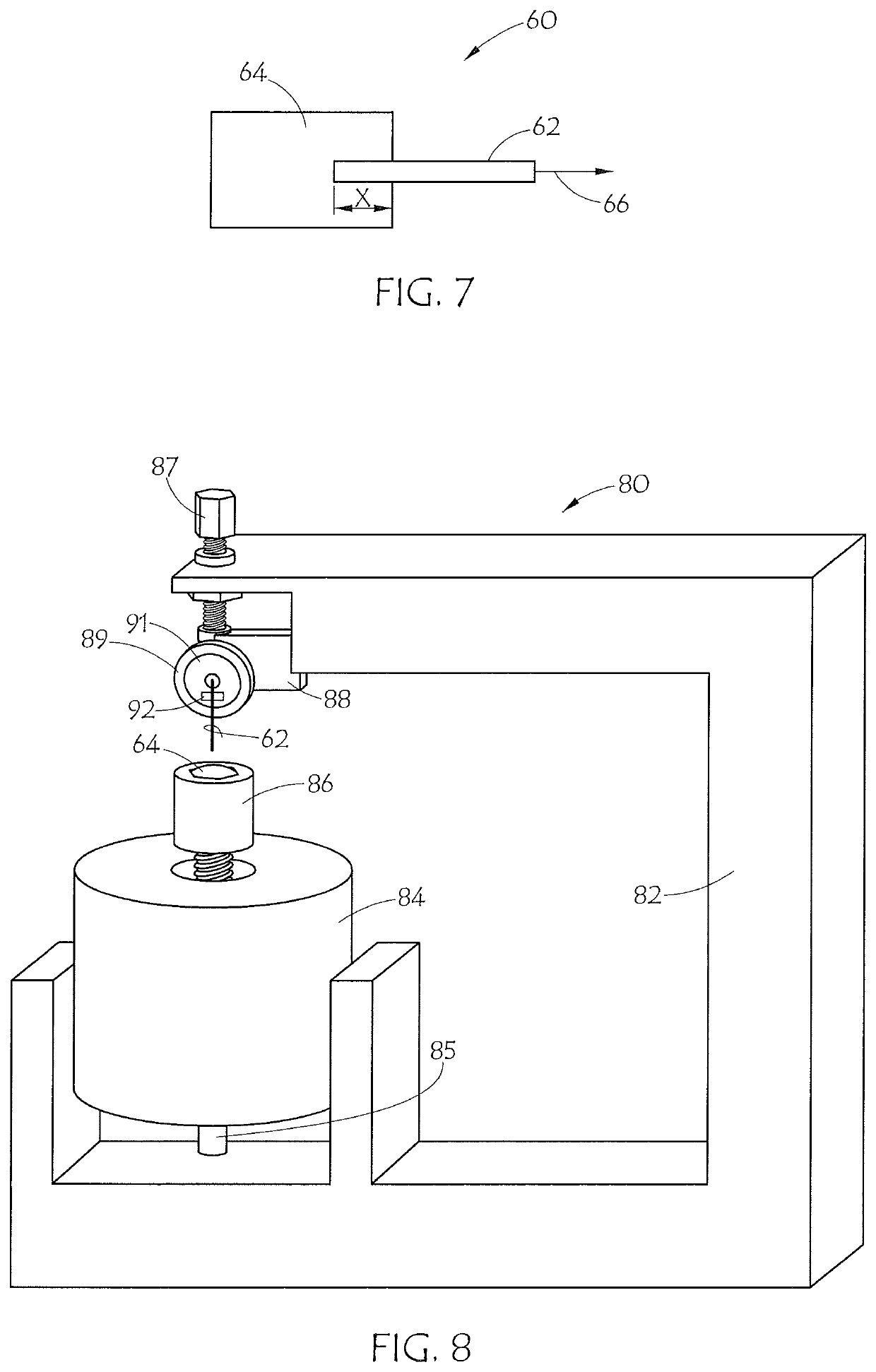Carbon cord for reinforced rubber products and the products
a technology of reinforced rubber and tensile cords, which is applied in the field of treated carbon fiber tensile cords for reinforced elastomeric composite products, can solve the problems of not being satisfactory for dynamic rubber applications, using plasma for surface cleaning and coating or activation, and not eliminating delamination at the fiber surface layer of epoxy primers, etc., to achieve the longest treatment time for rfl matrix, increase the functionality of fiber surface, and increase the chemical bonding
- Summary
- Abstract
- Description
- Claims
- Application Information
AI Technical Summary
Benefits of technology
Problems solved by technology
Method used
Image
Examples
Embodiment Construction
[0020]The invention is directed to a treated carbon fiber tensile cord for use in power transmission belts, hose, tires or other reinforced rubber products and the resulting product. The tensile cord includes carbon fibers which are coated with a suitable polymeric layer deposited and polymerized at atmospheric pressure in a plasma assisted chemical vapor deposition process. A suitable polymeric layer is one that is compatible with the intended matrix which the cord will reinforce. For example, for a rubber belt, the coating should be compatible with the rubber composition of the belt body or adhesion gum which will surround the cord. Resorcinol-formaldehyde-latex (“RFL”) cord treatments are often used as the matrix immediately surrounding the fibers in rubber belts. For rubber and polyurethane (“PU”) belt compounds, a suitable precursor or monomer, is one with lower molecule weight and double bonds which contains carboxyl, hydroxyl, ester, imide, carbonyl, or amide functional group...
PUM
| Property | Measurement | Unit |
|---|---|---|
| excitation frequency | aaaaa | aaaaa |
| power | aaaaa | aaaaa |
| flow rate | aaaaa | aaaaa |
Abstract
Description
Claims
Application Information
 Login to View More
Login to View More - R&D
- Intellectual Property
- Life Sciences
- Materials
- Tech Scout
- Unparalleled Data Quality
- Higher Quality Content
- 60% Fewer Hallucinations
Browse by: Latest US Patents, China's latest patents, Technical Efficacy Thesaurus, Application Domain, Technology Topic, Popular Technical Reports.
© 2025 PatSnap. All rights reserved.Legal|Privacy policy|Modern Slavery Act Transparency Statement|Sitemap|About US| Contact US: help@patsnap.com



